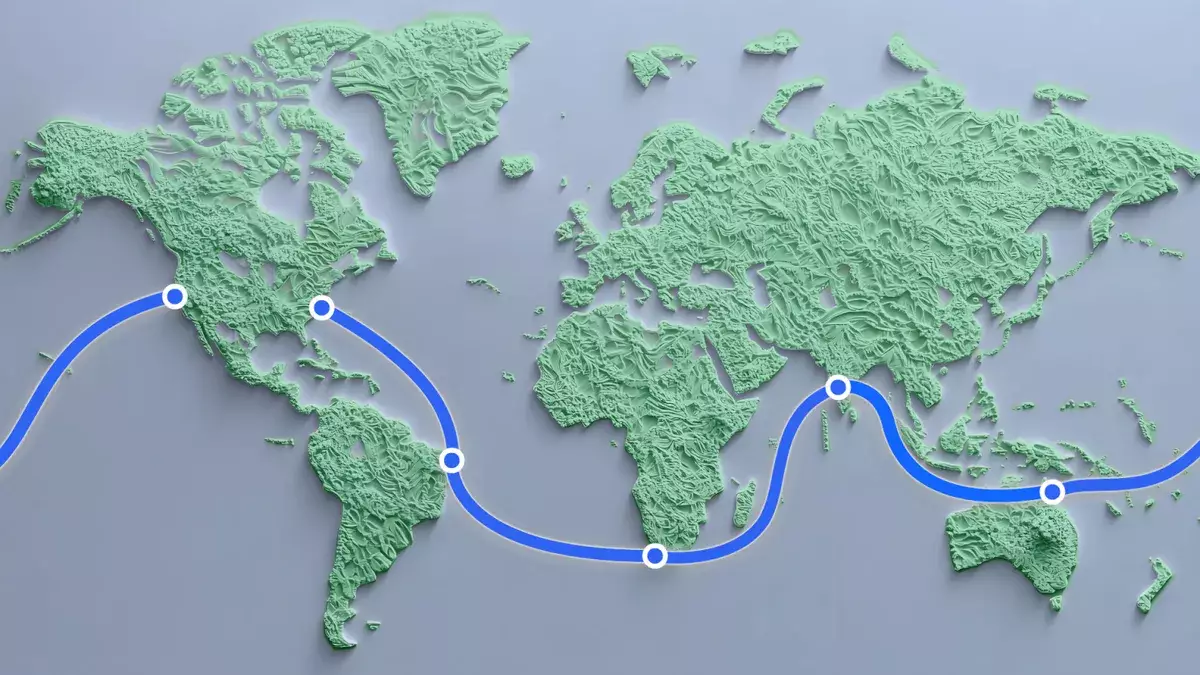In an era dominated by the glittering promises of wireless technology, it is essential to reflect on the infrastructure supporting these innovations. Despite our growing reliance on wireless communication, the reality is that approximately 98% of global internet traffic is transmitted through long, complex undersea cables. In 2025, when the allure of wireless technology is at its peak, Meta’s ambitious new undersea cable project invites us to consider the foundational physical reality that sustains our digital lives.
Meta has recently announced its grand blueprint for an undersea cable, dubbed Project Waterworth, which aims to stretch an astonishing 31,000 miles—surpassing the Earth’s circumference of 25,000 miles. This cable will connect numerous key locations, including the United States, India, South Africa, Brazil, and more, creating a network that spans vast oceans and several time zones. The proposed route begins on the eastern seaboard of the United States, journeys down to Brazil, traverses the Atlantic Ocean, and then moves past the southern tip of Africa. From there, the cable will wend its way to Mumbai in India, eventually making a final stop in Queensland, Australia, before returning to its origin point on the Californian coast.
The scope of this project is staggering, reflecting Meta’s commitment to enhancing global connectivity. The investment is described as a multi-billion dollar endeavor aimed at bolstering the internet’s “digital highways” to support advanced technological developments, particularly in artificial intelligence. While the concept of an undersea cable may initially seem outdated in an increasingly wireless world, it epitomizes the complex network necessary to feed our digital insatiability.
What makes Project Waterworth particularly exciting are the technological innovations it promises. The cable will be laid at depths of up to four miles—approximately seven kilometers—into the ocean, designed to withstand the stresses of the underwater environment. Achieving such depth is no small feat, as it requires advanced engineering solutions that prioritize resilience. Meta’s plans include sophisticated cable burial techniques in areas prone to hazards, such as ship anchors and tectonic shifts. This focus on durability signifies a shift towards more robust infrastructure, which is crucial for the ever-growing demands of global internet traffic.
Moreover, this cable aims to establish three new oceanic corridors, representing a significant leap forward in terms of speed and capacity. By employing innovative routing strategies, the project is set to maximize efficiency while mitigating risks associated with coastal waters. This way, Meta is not just creating a means of connectivity, but also revolutionizing the very methods through which we establish these connections.
Despite recent criticisms focused on Meta’s corporate practices, especially regarding misinformation and content moderation, the Project Waterworth initiative serves as a reminder of the company’s tangible contributions to global digital infrastructure. While Facebook and Instagram may grapple with reputation issues, this undersea cable demonstrates that Meta is capable of spearheading large-scale projects that have meaningful impacts on our world.
As we reflect on this juxtaposition, one must consider how a company can be viewed both as a facilitator of invaluable communication tools and, at the same time, a platform fraught with challenges regarding misinformation and user safety. While the discussions surrounding the ethical implications of Meta’s platforms continue, it is crucial to recognize the role they play in connecting the globe.
Ultimately, Project Waterworth presents a fascinating case study in the ongoing evolution of global connectivity. It emphasizes that despite emerging technologies like 5G and satellite internet, the physical infrastructure of undersea cables remains vital. As these cables are laid deep within the ocean, they echo the complexities of our digital age—marrying the organic with the technological and reinforcing the interconnected networks necessary for our future. In this ambitious undertaking, Meta is not merely promoting its brand; it is actively shaping the landscape of how we communicate in an increasingly connected world.

